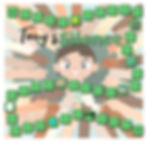Tony's Silence: A Book and Game about Selective Mutism
- Tasha Milligan
- Oct 27, 2023
- 4 min read
Updated: Jan 1, 2024

Tony's Silence is a short book with a full counseling game to address selective mutism in children. While there is controversy about the root cause of the problem, it appears to be driven by anxiety. This resource is designed to provide a physical representation of what is happening internally for children who struggle with the disorder. Many children will report feeling that their lips are zipped, have a lock on their mouths, or feel stuck and unable to move.

Selective mutism is a disorder in which children can speak freely in some situations but are unable to speak in other situations. Children commonly will be able to speak fine at home, but will not speak at school. There are many variations of how this disorder is expressed depending on the underlying issues and specific triggers with the child.
The disorder's symptoms are typical of a person who has a freeze response to the fight, flight, or freeze response. Children may report a rapid heartbeat, sweaty hands, bells ringing in their ears, feeling lightheaded, and that their arms and legs go numb or are they are unable to move. The book and game offer coping mechanisms and body awareness to help children recognize why they have this experience so they can feel relief from it. You can learn more about the fight, flight, or freeze response and counseling interventions for it here.

I created this resource at the request of a friend who needed something to help teachers understand the underlying issues behind selective mutism and ways they can accommodate the needs of the child. When teachers are aware that kids can speak in some situations, they often consider this response as defiance and an unwillingness to speak. Providing resources to the teachers and parents of children struggling with selective mutism can help create an atmosphere of safety and growth, allowing the child to communicate in a way that works for all involved.

Working with a child with selective mutism can be challenging. Some children feel confident and able to speak freely in the counseling room while others will not speak. While some of the response cards for the game encourage children to write out or act out responses, the game may need to be modified based on the needs of the child. Alternatively, this could be a resource to provide to the child's family to play together in a setting in which the child is able to speak freely.
While the story is about a fictional character named Tony, each child will be able to compare and contrast their own experience with Tony's. The imagery was designed to help children get a visual representation of an internal struggle. Children will often better process information and overcome challenges once they are able to comprehend the underlying issues. The imagery can also be a powerful tool to show others why they are unable to speak. It can be deeply frustrating when you want to communicate but lack the words or ways to express yourself to others. The goal of this resource is to offer a mechanism for communication for children who are stuck.
The game comes with 48 game cards on eight different topics:
Communication - Kids will explore different ways they can communicate nonverbally.
Lips Zipped - Children will identify symptoms in their bodies as well as ways to calm their bodies when triggered.
Consequences - Children will have an opportunity to process emotions related to times they were punished due to their inability to speak. Some cards also help children identify self-talk statements related to fears of consequences.
Body Signals - Each child will have different physical symptoms when triggered. Identifying and understanding the cause of these body signals will help alert children when they need to start using coping skills and how to turn off the fight, flight, or freeze response.
Under Pressure - The child's internal dialogue will result in an emotional and physical response. These cards will help children recognize self-talk and how they can rescript it.
Research - Education is a powerful tool. Kids will be challenged to learn more about their bodies, how to educate others in their lives, and how they can find solutions to problems once the problem is identified.
Happy Days - Kids often need help focusing their thoughts in a positive direction. These cards help highlight the happy moments they can focus their attention on to avoid getting into negative, ruminating thoughts.
Locked Up - These cards will help kids communicate what happens when they feel like they cannot speak. They will be challenged to think of new ways to respond or think about what is happening so they can find ways to unlock their bodies when triggered.

Ultimately, cognitive behavioral therapy has been proven to be an effective treatment for anxiety. CBT skills are included in the game to help children learn how to focus their thoughts on something calming, to challenge negative or irrational thoughts, and to be aware of thought processes behind the triggers.
I hope Tony's Silence book and game become a beneficial tool in your counseling toolbox to help with selective mutism. Be sure to check out our other books, games, and resources. Several free games are available, as well as free eBooks, and printables.
Helpful Resources:

